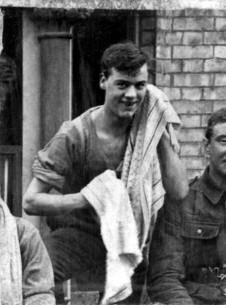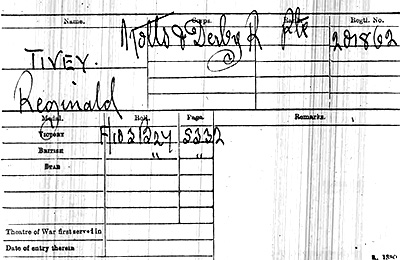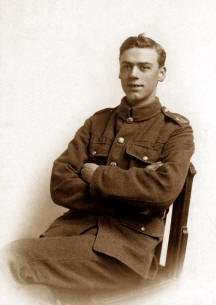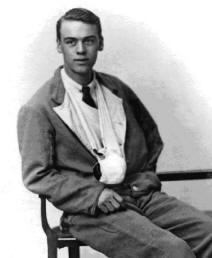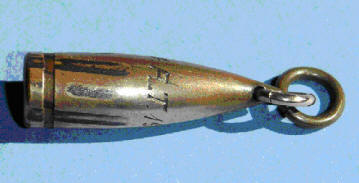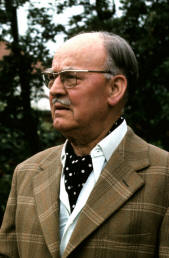| Reginald Tivey was born 20th July 1896 in the
market town of Melbourne, Derbyshire. He was the middle child
born to parents Samuel Tivey, a shoemaker, and his wife
Elizabeth Smith. He was the biological brother of Harriet
Elizabeth (Bennett), Ernest William, Flora (Moore) and Samuel
who died in infancy. Reginald was brought up by the Singleton
family (William & Mary Ethel) and considered their daughter Lena
Molly Singleton as a sister. Reginald married twice - firstly to
Barbara Annie Bell Irving with whom he fathered a son Alastair
Michael, and later to Mildred Lydia Arnold Chappell . Special
thanks to Alastair for all the information that he kindly
donated to the site including the many photographs, artwork and
stories of Reginald's life. |
The following narrative is
by Reginald's son. "After the outbreak of World War I, in August
1914, Reginald enlisted with his local regiment, the Sherwood
Foresters – even though he was only eighteen, and the minimum
official age for service was then nineteen. He spent the first
two and a half years of his service in training, while his
regiment was held in reserve, apart from a brief distraction in
Dublin in 1916. It was at Easter in that year that the Irish
republicans chose to mount an uprising against the English, and
the regiment was sent over to help restore order. In a tragic
episode in the streets of Dublin, a whole detachment of
Reginald’s comrades were massacred in an ambush by Sinn Fein,
who were using guerilla tactics. Reginald never forgave the
Irish for that. His regiment remained in Dublin for a while,
continuing with their training, until things cooled down. Early
in 1917, Reginald’s regiment was sent to France to join the main
British front line. A major onslaught started in March. The
regiment passed through Foucocourt and the ruined villages of
Jeancourt and Vraignes, and pushed the Germans back 20-40 miles,
only to lose ground again when the Germans started a last,
desperate counter-offensive. At the beginning of April, eight
hundred of the regiment were in action again between St. Quentin
and Péronne on the Somme when another great advance started. As
a result of bad planning and organization, they reached the
enemy six hours late – instead of two hours before daybreak, as
intended, only to be mercilessly mown down by the German machine
guns, which the artillery were supposed to have silenced first:
out of the original eight hundred, only twenty-five were left
fit enough to carry on. Reginald was badly wounded in the left
shoulder, and was fortunate to get home. Indeed, at first he was
not expected to live. He was taken first to a dressing station
and then to a casualty clearing station at Bray-sur-Somme,
before being transferred to a hospital at Le Havre. From there
he crossed the Channel in the hospital ship “Lanfranc” (which
was sunk on its next crossing), before spending three years in
Springburn Red Cross Hospital and then Kelvingrove Red Cross
Hospital (now the Western Infirmary), both in Glasgow. He lost
the use of his left forearm and hand (which was ‘set’ as a
closed fist), for which he received a War Disability Pension for
the rest of his life. His industrial career was at an end, as he
could now only do clerical work; but surprisingly, neither his
sport nor his art suffered noticeably – and he could still play
the piano with one hand and a fist! The bullet that wounded him
was mounted by Mappin & Webb in London , and is inscribed “4.4
RT 1917” (The 4.4 refers to the date of the action). When he
visited the War Memorial in Melbourne in 1975, he was genuinely
moved to read all the names of those killed in France, with whom
he had been at school or played games in his youth; there were
so many of them, almost a lost generation. Commentary by
Reginald's son. Many thanks to him for the amount and the
quality of the information received with regards to Reginald and
the Tivey Family of Melbourne."
|
